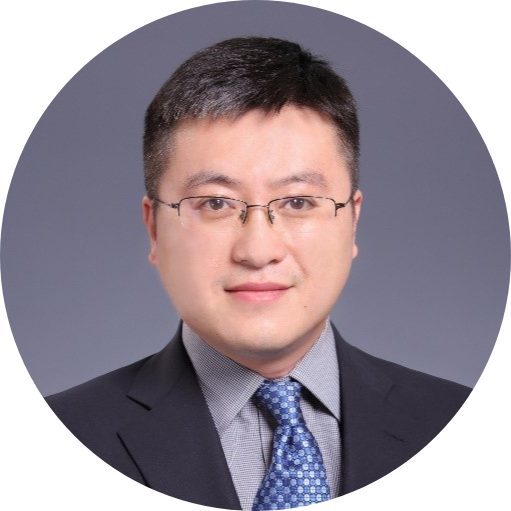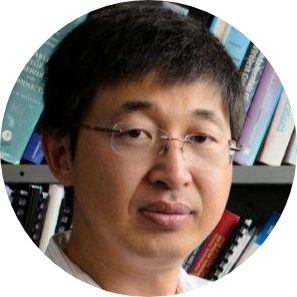2025 Keynote Speakers
2025 Keynote Speakers
Keynote Speaker Ⅰ

Prof. Feifei Gao
Tsinghua University, China
IEEE Fellow
Brief Biography: Feifei Gao (Fellow, IEEE) received the B.Eng. degree from Xi'an Jiaotong University, Xi'an, China in 2002, the M.Sc. degree from McMaster University, Hamilton, ON, Canada in 2004, and the Ph.D. degree from National University of Singapore, Singapore in 2007. Since 2011, he joined the Department of Automation, Tsinghua University, Beijing, China, where he is currently a tenured full professor.
Prof. Gao's research interests include signal processing for communications, array signal processing, convex optimizations, and artificial intelligence assisted communications. He has authored/coauthored more than 200 refereed IEEE journal papers and more than 150 IEEE conference proceeding papers that are cited more than 21000 times in Google Scholar. Prof. Gao has served as an Editor of IEEE Transactions on Wireless Communications, IEEE Journal of Selected Topics in Signal Processing (Lead Guest Editor), IEEE Transactions on Cognitive Communications and Networking, IEEE Signal Processing Letters (Senior Editor), IEEE Communications Letters (Senior Editor), IEEE Wireless Communications Letters, and China Communications. He has also served as the symposium co-chair for 2019 IEEE Conference on Communications (ICC), 2018 IEEE Vehicular Technology Conference Spring (VTC), 2015 IEEE Conference on Communications (ICC), 2014 IEEE Global Communications Conference (GLOBECOM), 2014 IEEE Vehicular Technology Conference Fall (VTC), as well as Technical Committee Members for more than 50 IEEE conferences.
Speech Title: Key Technologies and Prototype Design for Integrated Sensing and Communications
Abstract: In the future, millions of base stations (BSs) and billions of users (UEs) will natively build an integrated sensing and communications (ISAC) system, which can utilize intelligent ubiquitous methods to realize the ultimate goal of sensing, i.e., constructing the global mapping from real physical world to digital twin world, while providing communications services at the same time. For this purpose, we conduct a series of theoretical and technical researches on ISAC, in which we decompose the real physical world into static environment, dynamic targets, and various object materials. The ubiquitous static environment occupies the vast majority of the physical world, for which we design static environment reconstruction (SER) scheme to obtain the layout and point cloud information of static buildings. The dynamic targets floating in static environments create the spatiotemporal transition of the physical world, for which we design comprehensive dynamic target sensing (DTS) scheme to detect, estimate, track, image and recognize the dynamic targets in real-time. The object materials enrich the electromagnetic laws of the physical world, for which we develop object material recognition (OMR) scheme to estimate the electromagnetic coefficient of the objects. Finally, based on these theoretical researches, we build an ISAC hardware prototype platform working in millimeter wave frequency band, realizing high-precision SER, DTS, and basic OMR, which provides preliminary verification for building the digital twin for communications networks.
Keynote Speaker Ⅱ

Prof. Yonghui Li
The University of Sydney, Australia
IEEE Fellow
Brief Biography: Yonghui Li is now a Professor and Director of Wireless Engineering Laboratory in School of Electrical and Information Engineering, University of Sydney. He is the recipient of the Australian Research Council (ARC)Queen Elizabeth II Fellowship in 2008 and ARC Future Fellowship in 2012. He is an IEEE Fellow and Clarivate highly cited researcher. His current research interests are in the area of wireless communications. Professor Li was an editor for IEEE transactions on communications, IEEE transactions on vehicular technology and guest editors for several special issues of IEEE journals, such as IEEE JSAC, IEEE IoT Journals, IEEE Communications Magazine. He received the best paper awards from several conferences. He has published one book, more than 300 papers in premier IEEE journals and more than 200 papers in premier IEEE conferences. His publications have been cited more than 25000 times.
Speech Title: Beyond 5G towards a Super-connected World
Abstract: Connected smart objects, platforms and environments have been identified as the next big technology development, enabling significant society changes and economic growth. The entire physical world will be connected to the Internet, referred to as Internet of Things (IoT). The intelligent IoT network for automatic interaction and processing between objects and environments will become an inherent part of areas such as electricity, transportation, industrial control, utilities management, healthcare, water resources management and mining. Wireless networks are one of the key enabling technologies of the IoT. They are likely to be universally used for last mile connectivity due to their flexibility, scalability and cost effectiveness. The attributes and traffic models of IoT networks are essentially different from those of conventional communication systems, which are designed to transmit voice, data and multimedia. IoT access networks face many unique challenges that cannot be addressed by existing network protocols; these include support for a truly massive number of devices, the transmission of huge volumes of data burst in large-scale networks over limited bandwidth, and the ability to accommodate diverse traffic patterns and quality of service (QoS) requirements. Some IoT applications have much stringent latency and reliability requirements which cannot be accommodated by existing wireless networks. Addressing these challenges requires the development of new wireless access technologies, underlying network protocols, signal processing techniques and security protocols. In this talk, I will present the IoT network development, architecture, key challenges, requirements, potential solutions and recent research progress in this area, particularly in 5G and beyond 5G.
Keynote Speaker Ⅲ

Prof. Min Jia
Harbin Institute of Technology, China
Brief Biography: Prof. Min JIA is professor and Ph. D supervisor of Harbin Institute of Technology and School of Electronics and Information Engineering. She has carried out systematic research on the theory and method of utilization of multi-dimensional and multi-domain efficient resource management for satellite terrestrial stereo spectrum shared network. And 5 papers are selected as ESI 1% high citation papers. Two political advisory report has been adopted by national and provincial ministerial administrations as the first author. She has been granted 62 patents as the first inventor and won 10 Best paper awards. As the proposal leader leads one technical proposal from the IMT-2030 6G Promotion Group. And also participated in three industry standards which have been implemented in the communication industry field. As the project leader, she undertakes one key project of the National Natural Science Foundation of China. She was selected as a council member of the Chinese Institute of Electronics and established the first IEEE Women In Engineering Harbin Affinity Group in China. She is the editorial board member or guest editor for 8 domestic and international journals. She also won the first level Science and Technology Award of China Institute of Communications and the first and second level Science and Technology Awards of Heilongjiang Province, as well as the Heilongjiang Province Youth Science and Technology Award and the Chinese Institute of Electronics Young Scientist Award. She was selected as the the member of national major projects for talent development in 2021.
Speech Title: Multi Agent Edge Computing Assisted Efficient Resource Management in Collaborative Satellite and Terrestrial Systems
Abstract: The space-ground integrated network, empowered by multi-agent collaboration, is an emerging architectural paradigm designed to accommodate diverse services and applications in next-generation networks. This technical report proposes a three-dimensional space-air-ground omnidirectional network architecture targeting comprehensive requirements across marine, aerospace, and terrestrial domains. The envisioned system guarantees continuous global coverage while supporting heterogeneous service demands spanning telecommunications, navigation, IoT, and sensing-control integration. From a multi-agent system perspective, this keynote address presents three pivotal innovations. An intelligent computing framework for optimized resource orchestration in satellite-terrestrial ecosystems. Moreover, a converged 6G network architecture integrating communication, sensing, storage, and computing capabilities within SAGIN (Space-Air-Ground Integrated Networks). Furthermore, a novel edge-core collaborative model deploying LEO satellites and mobile terminals as distributed intelligent agents. The proposed methodology advances resource management paradigms for space-ground converged networks through three key enhancements. Dynamic resource virtualization across orbital and terrestrial strata, AI-driven quality-of-experience optimization for multi-service provisioning and distributed decision-making mechanisms balancing central coordination and edge autonomy. This research provides transformative insights for next-generation network infrastructure development, offering implementable solutions that bridge theoretical innovation with practical deployment considerations. The proposed architecture demonstrates significant potential in advancing global connectivity frameworks and accelerating the realization of ubiquitous intelligent networking.
Keynote Speaker Ⅳ

Prof. Xuejun Sha
Harbin Institute of Technology, China
Brief Biography: Prof. Xuejun SHA is a tenured professor at Communication Research Center, Harbin Institute of Technology. He is the Fellow of the Chinese Institute of Electronics, Senior Member of the China Institute of Communications, Editorial Board Member of the Journal of Communications, Committee Member of the Communication Society of Chinese Institute of Electronics, Committee Member of the Electromagnetic Spectrum Security Committee of the Command and Control Society, and the recipient of the New Century Excellent Talents Support Program.
Prof. Sha has long been engaged in mobile communication education and research on novel theories and methods for electromagnetic space and physical layer transmission. He has presided over 30 major research projects, including the 973 Program, key projects of the National Natural Science Foundation of China, and national defense basic pre-research projects. He has been honored with more than 20 provincial/ministerial-level science and technology awards and holds over 50 authorized invention patents.
His current research focuses on 5G/6G-compatible physical layer dynamic networking methods, transmission mechanisms, secure covert communication, and anti-jamming transmission technologies.
Speech Title: System Prototype and Physical Waveform Enhancement
Abstract: Against the backdrop of the continuous deepening of 5G commercialization and the accelerated advancement of 6G research and development, wireless communication scenarios are becoming increasingly diversified. From dense urban areas to remote mountainous regions, and from ground communication to air-space-ground integrated communication, the channel environment exhibits strong dynamics and complexity, with electromagnetic interference becoming increasingly severe, posing higher requirements for the stability and reliability of communication systems.
The existing single-carrier system, although showing advantages in certain specific scenarios, has limitations in high spectral efficiency and multi-user access; the OFDM system, despite being widely used, has exposed deficiencies in anti-interference and high-frequency band adaptability.
This conference theme report will focus on these challenges, conduct an in-depth analysis of the technical characteristics and application bottlenecks of single-carrier and OFDM systems. On this basis, it will focus on exploring the innovative directions of new physical layer waveform systems and the core methods of transform-domain waveform design and processing. The report is committed to improving the adaptability of communication systems to complex channels through technological innovation, overcoming key technologies such as anti-interference transmission, and combining experimental verification to demonstrate the effectiveness of new systems and methods in practical applications, providing strong support for the development of next-generation communication technologies.